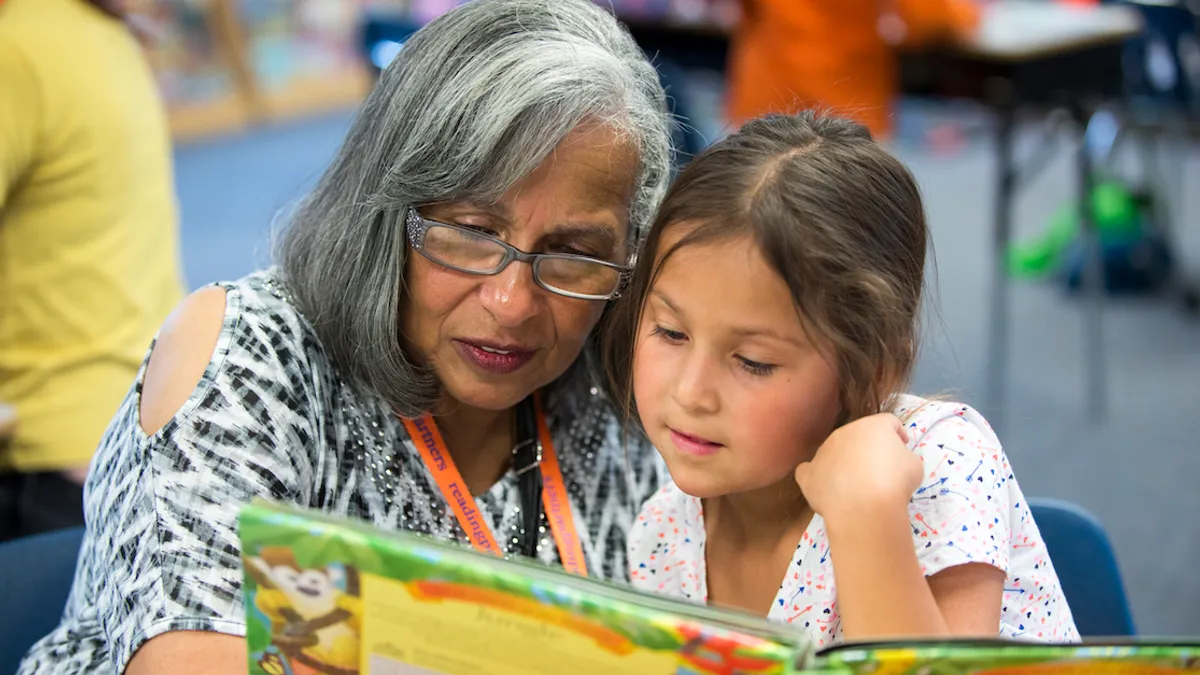Dive Brief:
-
Poverty alone cannot account for the fact that 32% of 4th-graders and 24% of 8th-graders nationally can’t read at a basic level, and less than 40% are at least proficient in reading — and those data points are drawing questions around whether reading instruction methods are a large part of the problem, NPR reports.
-
Many teachers have little training in reading instruction or have been incorrectly taught that reading is a natural process, with little background on the science or research behind literacy learning. As school and district leaders assume the responsibility for providing that instruction to teachers, reading scores can improve.
-
After a school district in Bethlehem, Pennsylvania, hired an educational consultant to provide science-based reading instruction training to its early elementary school teachers, reading scores improved, and 84% of kindergartners met or exceeded the benchmark score in 2018.
Dive Insight:
Providing students with a proper foundation in reading was the main goal of public education and remains one of the most important goals today. When students learn to read well in early elementary schools, reading scores not only improve, but students will likely perform better in other subjects because they have a clearer understanding of texts and can work more independently. That improvement will carry over into later grades as well as better preparing students for the future.
Despite the importance of literacy in schools, many teachers surprisingly have very little training in the scientific basis for reading instruction. According to a 2006 report by the National Council on Teacher Quality, entitled "What Education Schools Aren't Teaching about Reading and What Elementary Teachers Aren't Learning," education schools generally score poorly on how well their courses teach components of the science of reading.
"The findings are alarming," the study said. "Only 15% of the education schools provide future teachers with minimal exposure to the science. Moreover, course syllabi reveal a tendency to dismiss the scientific research in reading, continuing to espouse approaches to reading that will not serve up to 40 percent of all children. Course texts were equally disappointing. Only four of the 227 texts were rated as 'acceptable' for use as a general, comprehensive textbook."
A 2018 report on reading instruction by the same organization indicates that the topic is still not a high priority for states. The report indicates that, while most states have teacher education program standards that include reading instruction, only 11 require elementary and special education teachers to demonstrate their knowledge on a licensing test. The organization goes on to recommend that states should require teacher candidates to pass a test demonstrating a knowledge of research-based information about learning how to read.
Meanwhile, philosophical and political debates about whether phonics or whole language is the best method of instruction clouds the issue. The truth is that elements of both methods are necessary in reading instruction and that students do not all learn the same way. Teachers need to be armed with adequate preparation and proper resources to do the work of reading instruction with a diverse student population.
This is where school superintendents and principals come in. District leaders need to assign the job of researching the best methods and curriculum for reading instruction for their districts to a person or team in their district. They then need to provide sufficient professional development and resources to get everyone on the same page as students move from one grade level to another and, ideally, from one school to another within the district. The work is too important to ignore and will benefit the district as a whole in the long run.













